Tokyo, the capital city of the parliamentary democratic monarchy of Japan, is also home to the Emperor's Palace and the seat of Government and Parliament. In East-Central Honshu, the largest of Japan's main islands, this heavily populated city is well worth exploring. One of the world's most modern cities in terms of its infrastructure and design - due largely to the 1923 earthquake and the devastation of WWII - Tokyo also holds the title of the world's most expensive city in which to live (it's also one of the easiest to get around thanks to its superb rail and subway networks). The cultural side of Tokyo is famous for its numerous museums; theaters; festivals; internationally noted cuisine; and professional sports clubs, including baseball, football (or soccer), along with traditional Japanese pursuits like Sumo Wrestling. It's also a city rich in music and theater, with numerous venues featuring everything from Japanese to modern dramas, symphony orchestras, and pop and rock concerts.
1 The Imperial Palace
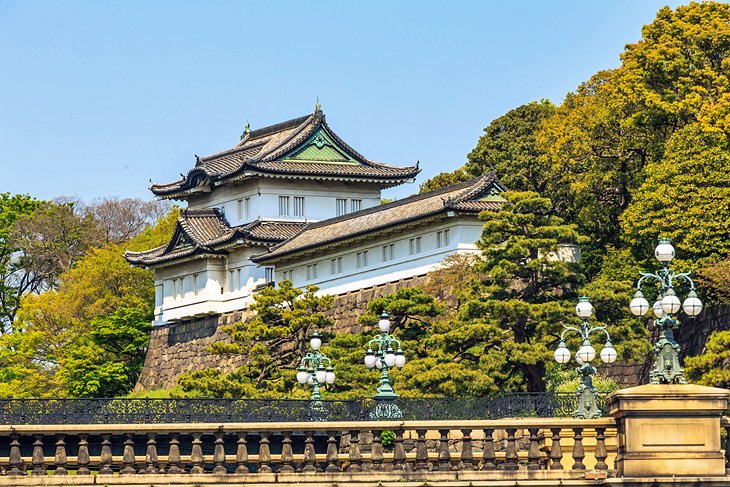
The chief attraction of Tokyo's Marunouchi district is the Imperial Palace with its beautiful 17th-century parks surrounded by walls and moats. Still in use by the Imperial family, the Imperial Palace stands on the site where, in 1457, the Feudal Lord Ota Dokan built the first fortress, the focal point from which the city of Tokyo (or Edo, as it was then) gradually spread. As famous as the palace is the Nijubashi Bridge leading to its interior, a structure that takes its name ("double bridge") from its reflection in the water. Other notable features include the two-meter-thick wall surrounding the palace and its gates, one of which leads to the East Higashi-Gyoen Garden, one of the few areas open to the public (the main Palace Gardens are only open twice a year, on January 2nd and April 29th, when crowds flock here to catch sight of the Emperor). One fortress that can be visited is Edo Castle (Chiyoda Castle), built in 1457 and located in Tokyo's Chiyoda district.
2 Ginza District: Shop 'til you Drop
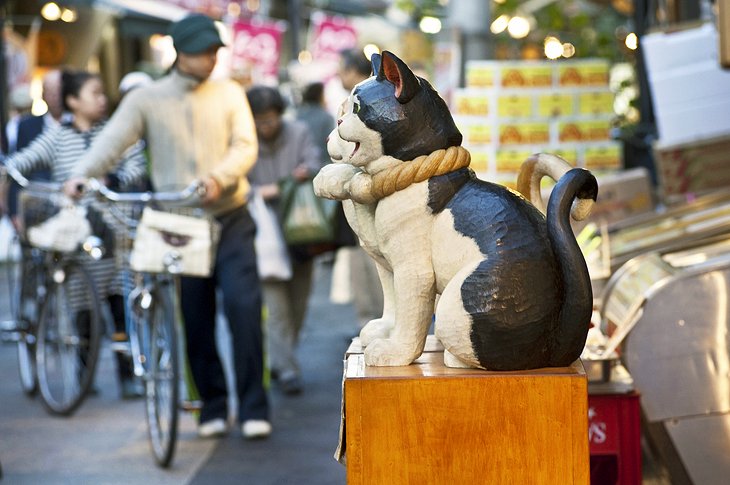
Ginza is Tokyo's busiest shopping area and is as iconic as Times Square in New York, and much older: it's been the commercial center of the country for centuries, and is where five ancient roads connecting Japan's major cities all met. Lined by exclusive shops and imposing palatial stores, the Ginza district is also fun to simply wander around or, better still, sit in one of its many tea and coffee shops or restaurants while watching the world rush past. At weekends, when everything is open, it's a shopper's paradise as traffic is barred, making it one of the world's largest pedestrian zones; come nightfall, gigantic advertising panels on its many buildings bathe Ginza in bright neon light. It's also where you'll find the famous Kabuki-za Theatre, home to traditional Kabuki performances, as well as theShimbashi Enbujo Theatre in which Azuma-odori dances and Bunraku performances are staged.
3 Asakusa and the Sensō-ji Temple
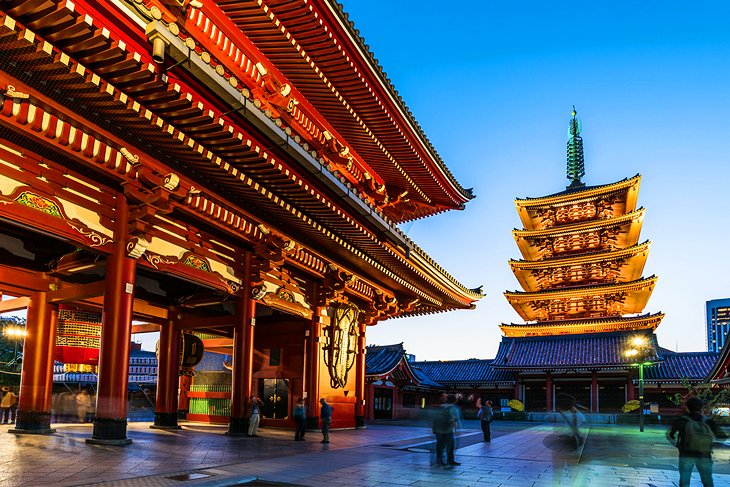
In the Asakusa district of Tokyo, the exquisite Sensō-ji Temple - the city's most famous shrine - stands at the end of a long street of shops where masks, carvings, combs made of ebony and wood, toys, kimonos, fabrics, and precious paper goods are on sale. Dedicated to Kannon, the Buddhist goddess of compassion, the temple was established in AD 645 and retains its original appearance despite having been rebuilt numerous times. Highlights include the Kaminari-mon Gate with its 3.3-meter-high red paper lantern bearing the inscription "Thunder Gate;" the famous and much-loved Incense Vat, reputed to drive away ailments (you'll see people cupping their hands around the smoke and applying it to the part of their body needing healing); and the fascinating temple doves, said to be Kannon's sacred messengers (they also tell fortunes by pulling cards from a deck). Afterwards, be sure to explore the rest of the 50-acre temple precinct with its warren of lanes.
Address: 2 Chome-3-1 Asakusa, Taito, Tokyo 111-0032
Official site: www.senso-ji.jp/about/index_e.html
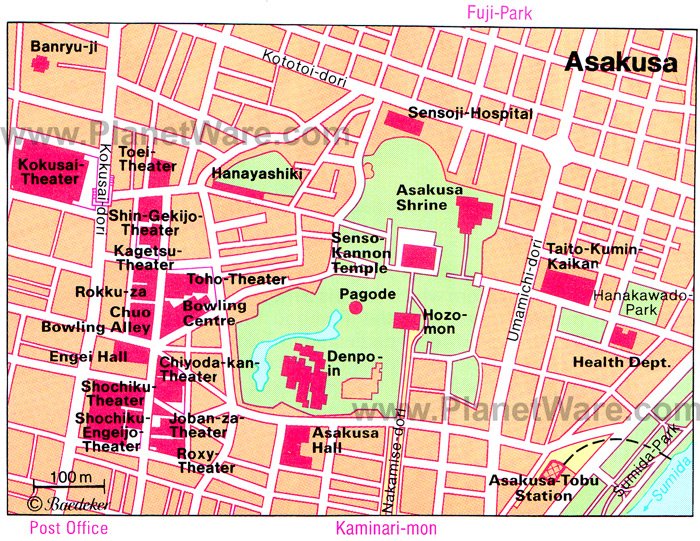 Asakusa Map
Asakusa Map
4 National Museum of Nature and Science
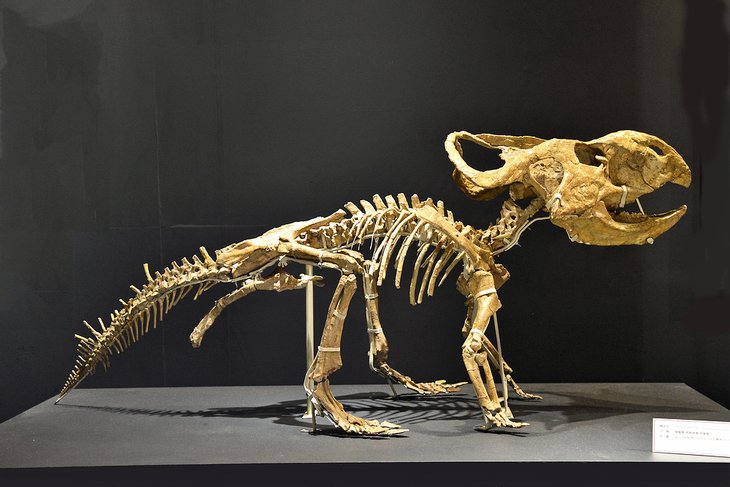
In Tokyo's Ueno Park, the superb National Museum of Nature and Science (Kokuritsu Kagaku Hakubutsukan) opened in 1871 and is one of the country's oldest museums. Completely renovated and modernized, the museum houses a vast collection of materials related to natural history and science, including many fascinating interactive displays on space development, nuclear energy, and transportation, allowing visitors a unique insight into the latest scientific and technological advances. Highlights of the Japan Gallery (Nihonkan) include numerous exhibits of prehistoric creatures and the Japanese people, including traditional customs and outfits, while the Global Gallery (Chikyūkan) features many excellent scientific and technology displays, including robotics and vintage vehicles.
Address: 7-20 Uenokoen, Taito, Tokyo 110-8718
Official site: www.kahaku.go.jp/english/
5 Ueno Park and Zoo
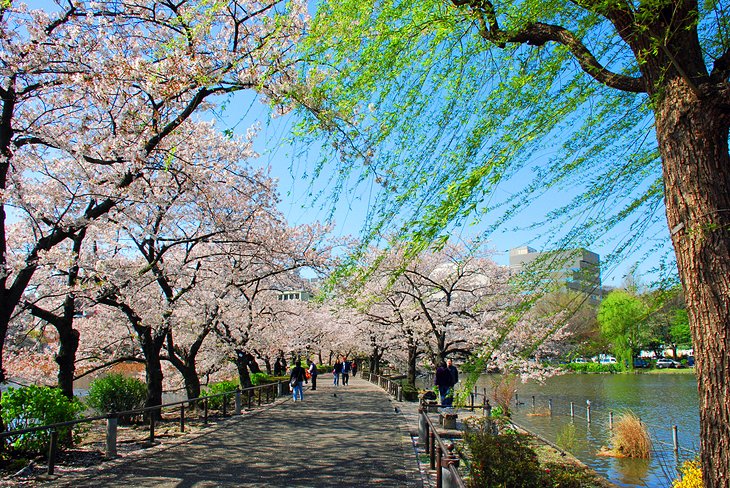
A paradise-like oasis of green in the heart of busy Tokyo, Ueno Park is the city's largest green space and one of its most popular tourist attractions. In addition to its lovely grounds, the park also boasts a zoo, aquarium, and numerous temples and museums to explore. Criss-crossed by pleasant gravel paths, this 212-acre park includes highlights such as a trip on a small boat on the reed-fringedShinobazu pond, around a little island with its Bentendo Temple; visiting the 17th-century Toshogu Shrine with its 256 bronze and stone lanterns; or strolling around Ueno Park Zoo. Opened in 1882, it is Japan's oldest zoo, famous for the pandas presented by the People's Republic of China. The Aqua-Zoo, one of the largest aquariums in Asia, is also worth a visit, especially if traveling with kids.
Address: 9-83, Ueno Park, Tokyo, Kanto 110-8711
ENLARGE MAP PRINT MAPEMBED < >Ueno-Park Map
6 Tokyo National Museum
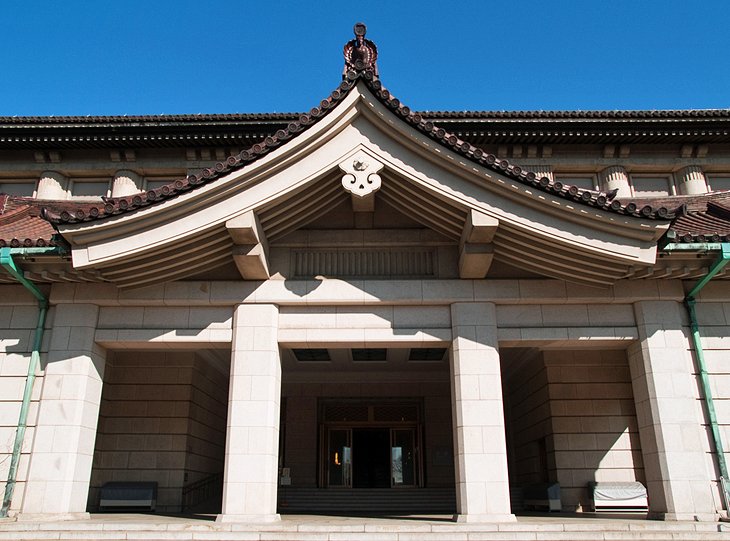
The National Museum of Tokyo houses more than 100,000 important works of Japanese, Chinese, and Indian art, including more than 100 national treasures. Opened in 1938, the museum includes highlights such as numerous Buddhist sculptures from Japan and China dating from the 6th century to the present; a collection of old textiles, historical weapons, and military equipment; historical Japanese clothing; as well as Asian ceramics and pottery. Important artwork includes Japanese paintings from the 7th to the 14th centuries; exquisite Japanese and Chinese masterpieces of lacquer-work of various centuries, including examples of lacquer-carving, gold lacquer, and lacquer with mother of pearl; and many fine examples of calligraphy. Also worth a visit is the museum's traditional Japanese landscape garden with its three pavilions, including the 17th-century Tein Teahouse (Rokuso-an), and the nearby Museum for East Asiatic Artwith its 15 exhibition galleries.
Address: 13-9 Ueno Park, Taito-ku, Tokyo, 110-8712
Official site: www.tnm.jp/?lang=en
7 National Museum of Western Art
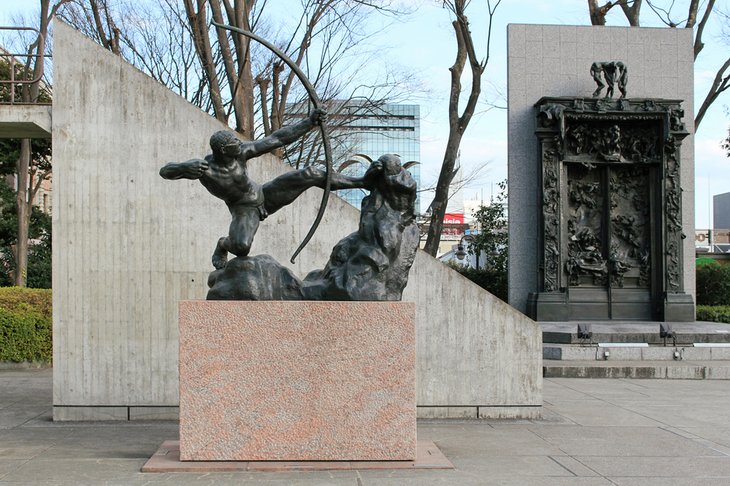
In Ueno Park, just three minutes' walk from Ueno Station, the National Museum of Western Art (Kokuritsu Seiyō Bijutsukan) was built in 1959 to plans by famous Swiss architect Le Corbusier. The exhibits, largely made up of works by important French artists, come mainly from the collections of Japanese businessman and art collector Kojiro Matsukata, bought during visits to Europe early in the 20th century. In the courtyard are works by French sculptor Auguste Rodin, while highlights inside are canvases by Impressionists Paul Cézanne, Claude Monet, Edouard Manet, and Edgar Degas. Hot Tip: The museum boasts an excellent restaurant with great views over the courtyard.
Address: 7-7 Uenokoen, Taito, Tokyo 110-0007
Official site: www.nmwa.go.jp/en/index.html
8 The Meiji Shrine
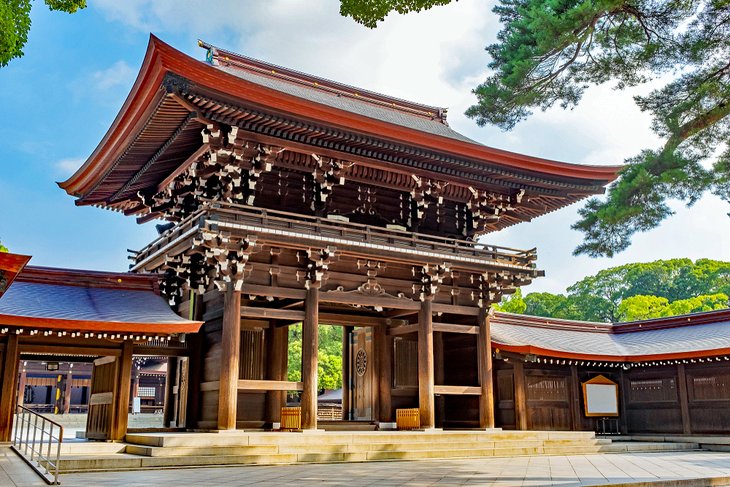
Dedicated to Emperor Meiji and his wife, Empress Shōken, construction of the splendid Meiji Shrine began in 1915 and was completed in 1926. Although the original structure was destroyed during WWII, it was rebuilt in 1958 and remains one of Tokyo's most important religious sites. Surrounded by a 175-acre evergreen forest that is home to some 120,000 trees representing species found across Japan, the shrine's highlights include its Inner Precinct (Naien) with its museum containing royal treasures, and the Outer Precinct (Gaien), home to the Meiji Memorial Picture Gallery with its superb collection of murals relating to the lives of the emperor and empress.
Address: 1-1 Yoyogikamizonocho, Shibuya, Tokyo 151-8557
Official site: www.meijijingu.or.jp/english/
9 The Miraikan and Edo-Tokyo Museums
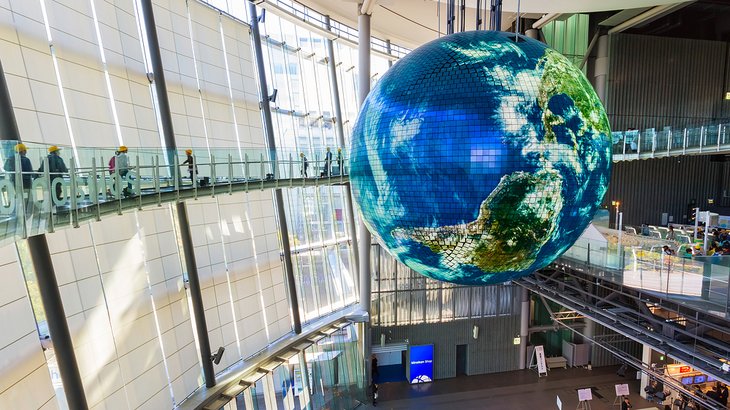
One of Tokyo's newest museums, the impressive National Museum of Emerging Science and Innovation (Nippon Kagaku Mirai-kan) - usually simply referred to as the Miraikan - offers a fascinating insight into Japan's leading role in the field of technology. Created by Japan's Science and Technology Agency, this ultra-modern, purpose-built facility includes many hands-on interactive exhibits dealing with everything from earthquakes to weather, as well as renewable energy and robotics, and displays relating to modern transportation that include a superb model of a Maglev train. Also worth visiting is the Edo-Tokyo Museum, completed in 1993 and dealing with the region's rich past, present, and future. Of particular interest is a replica bridge leading into a mock-up of dwellings in the original old city of Edo.
Address: 2-3-6 Aomi, Koto, Tokyo 135-0064
Official site: www.miraikan.jst.go.jp/en/
10 The Tokyo Skytree
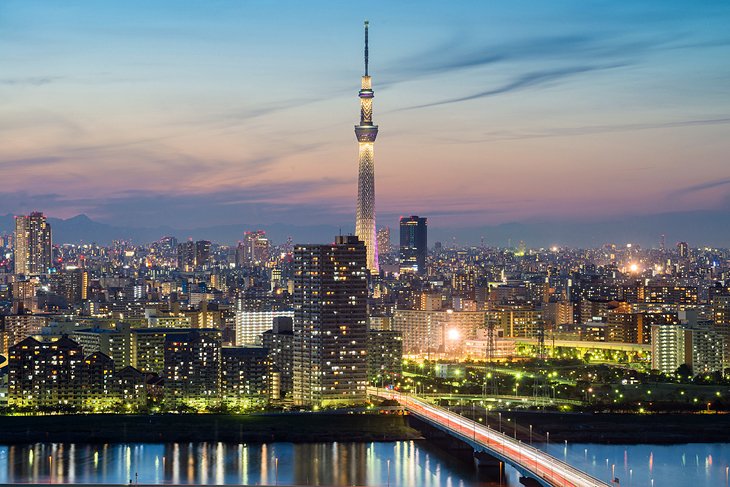
It's hard to miss the Tokyo Skytree (Tōkyō Sukaitsurī), a 634-meter-tall communications and observation tower that rises out of the city's Sumida district of Minato like a huge rocket ship. The country's tallest structure (and the world's tallest freestanding tower), the Tokyo Skytree opened in 2012 and has quickly become one of the city's most visited tourist attractions thanks to the incredible panoramic views from its restaurant and observation decks. With a base designed in the form of a massive tripod, the tower includes a number of cylindrical observation levels, including one at the 350-meter mark, and another at the 450-meter point, which includes a unique glass spiral walkway to an even higher viewpoint that also boasts glass floors for those with strong stomachs.
Address: 1 Chome-1-2 Oshiage, Sumida, Tokyo 131-0045
Official site: www.tokyo-skytree.jp/en/
11 The National Art Center
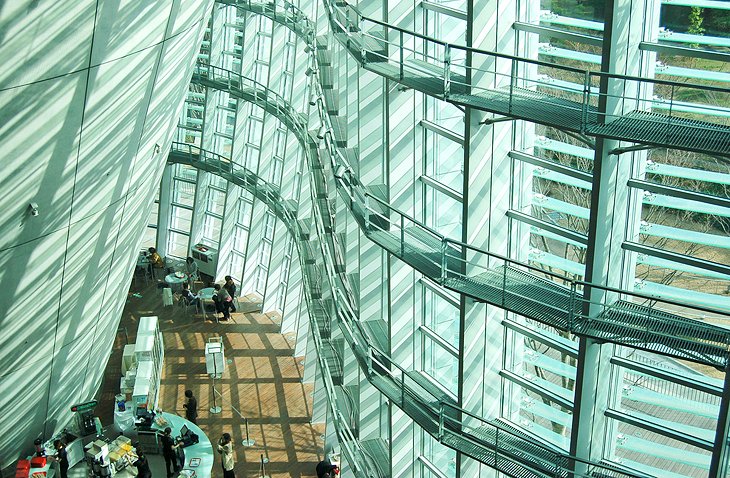
Another of Tokyo's world-class museums is the excellent National Art Center (Kokuritsu Shin-Bijutsukan). Housed in a remarkable curved glass building in the city's Roppongi district, this superb facility only opened in 2007 and has since earned a well-deserved reputation for its fine permanent collection of more than 600 paintings, most from the 20th century, including many important pieces of modern art, as well as regular visiting exhibitions (the facility also boasts a shop and a restaurant). Also worth checking out is the Mori Art Museum (Mori Bijutsukan) on the top floors of the neighboring Roppongi Hills Mori Tower and notable for its regular exhibits of contemporary artwork from around the globe.
Address: 7-22-2 Roppongi Minato-ku Tokyo 106-8558
Official site: www.nact.jp/english/index.html
12 The Kabuki-za Theatre
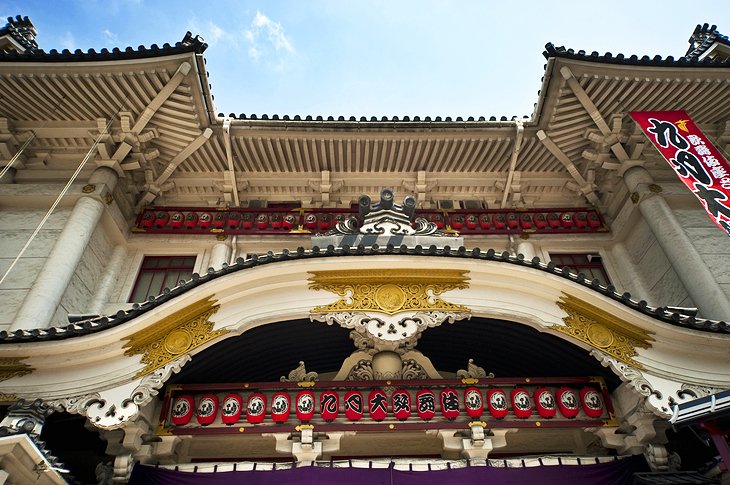
Tokyo is home to a number of excellent theaters, none as well known as the historic Kabuki-za Theatre in the city's busy Ginza district, home to famous traditional Kabuki performances. Based upon a medieval, highly skilled, and often burlesque theatrical form including song and dance, the theater's performances are as popular among tourists as they are Japanese-speaking people. The drama and comedy are relatively easy to follow thanks to rich visuals and theatricality. The theater's interior, usually full to capacity with some 2,500 guests, is always intimate and seems more akin to an enormous family get-together than a stage show due to the fact that spectators bring their own food or purchase treats from the various restaurants spread around the auditorium. Performances can last for hours, and spectators stay as long as they wish (or as long as they can bear), and no one seems to take offence at people's comings and goings, nor their loud cheering or jeering.
Where to Stay in Tokyo for Sightseeing
The best area to stay in Tokyo is the city center within walking distance of top attractions such as the Imperial Palace and close to Tokyo Station with its public transit and high-speed rail connections. The following hotels are highly recommended:
Luxury Hotels: Perched atop an office tower on the edge of Tokyo's financial district, the Mandarin Oriental, Tokyo offers excellent views over the city. Also boasting great views - this time over Tokyo Bay - is the Conrad Tokyo, popular for its proximity to the Ginza district with its great shopping and dining. Some of the best views in the city are from the refurbished Palace Hotel Tokyo, with some rooms offering balconies overlooking the gardens of the Imperial Palace.
Mid-Range Hotels: Close to the Imperial Palace and overlooking the magnificent red brick Renaissance-style Tokyo Station, Hotel Ryumeikan Tokyo is also near the city's best dining and shopping. Hotel Niwa Tokyo, north of the Imperial Palace and adjacent to the Tokyo Dome baseball stadium, is another good mid-range option, near public transport and shopping. A great family hotel is the Courtyard by Marriott Tokyo Ginza, just a five-minute walk from the Ginza shopping district.
Budget Hotels: Just minutes from the iconic Tokyo Tower and Shiba Park, Hotel Comsoleil Shiba Tokyo offers reasonably priced accommodations and is popular for its proximity to the Haneda Express Monorail, the direct link to Tokyo's international airport. Also worth considering are Hotel Mystays Asakusa-bashi and Hotel Yanagibashi, each close to popular, family-friendly attractions, including the National Museum of Nature and Science and the famous Tokyo Skytree tower.
No comments:
Post a Comment